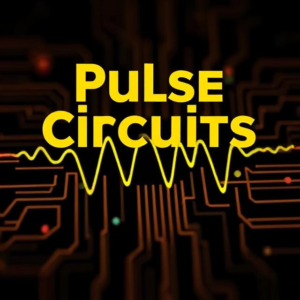What are Pulse Circuits?
Pulse Circuits are electronic circuits that generate pulses – which are quick bursts of electrical energy. These pulses can be used to control other devices or transmit information in many electronic systems.
You can think of a pulse like a short, quick flash of light or a quick beep. Instead of a steady, continuous flow of electricity, pulse circuits create these short bursts (pulses) of energy.

How Do Pulse Circuits Work?
- Generating Pulses: A pulse circuit has a part that makes it switch on and off quickly. This on/off action creates a pulse.
- When it’s on, electricity flows through the circuit.
- When it’s off, electricity stops flowing.
The circuit repeats this quickly, creating a series of short bursts or pulses.
- Pulse Duration: The length of each pulse and the time between pulses can be controlled. Some pulses may be very short, and others may be a bit longer. This is important for different applications.
- Control and Timing: Pulse circuits are often used for controlling timing or synchronizing other parts of an electronic system. For example, in a computer, pulse circuits help control the timing of operations, making sure things happen in the right order.
Why Are Pulse Circuits Important?
Pulse circuits are used in many applications where precise timing is needed, and they help control the flow of electrical energy in a way that’s different from just a continuous flow. Here are a few reasons why they are useful:
- Signal Transmission: Pulses can carry information. For example, in communication systems, pulse circuits can send data by turning the signal on and off in a pattern that can be understood by the receiver.
- Timing and Control: Pulse circuits are essential in devices that require precise timing, such as in digital clocks, timers, or computer processors. They ensure that tasks happen at the correct time.
- Switching: They are used to control switches in various devices. For example, a pulse circuit could turn a motor on and off or activate a sensor at specific intervals.
Where Are Pulse Circuits Used?
Pulse circuits are used in a variety of electronic devices and systems:
- Clocks and Timers: Pulse circuits can create signals for counting time (like in digital watches).
- Communication Systems: Sending data through pulses, like in wireless signals or radio.
- Control Systems: For controlling motors or other devices in machines, robotics, etc.
- Computers and Electronics: For timing operations in processors and memory.
In Summary:
- Pulse Circuits create short bursts of electrical energy (pulses) instead of a continuous flow.
- These pulses are used for controlling timing, sending information, or activating switches in various devices.
- They are important for systems where precision and control are needed, like in clocks, communication, and computer circuits.
In simple terms, pulse circuits are like the “quick on-and-off switches” that make electronic devices work in a controlled, organized way!
Tags: clock pulse circuits, communication pulse circuits, digital pulses, electrical pulses, electronic pulses, electronic timing, pulse circuit applications, Pulse Circuits, pulse control, pulse duration, pulse for data transmission, pulse generation, pulse modulation., pulse signal, pulse switching, pulse synchronization, pulse timing, pulse train, pulse transmission, pulse waveform, short electrical bursts, signal pulses, switching circuits, timer circuits, timing circuits, timing control circuits


